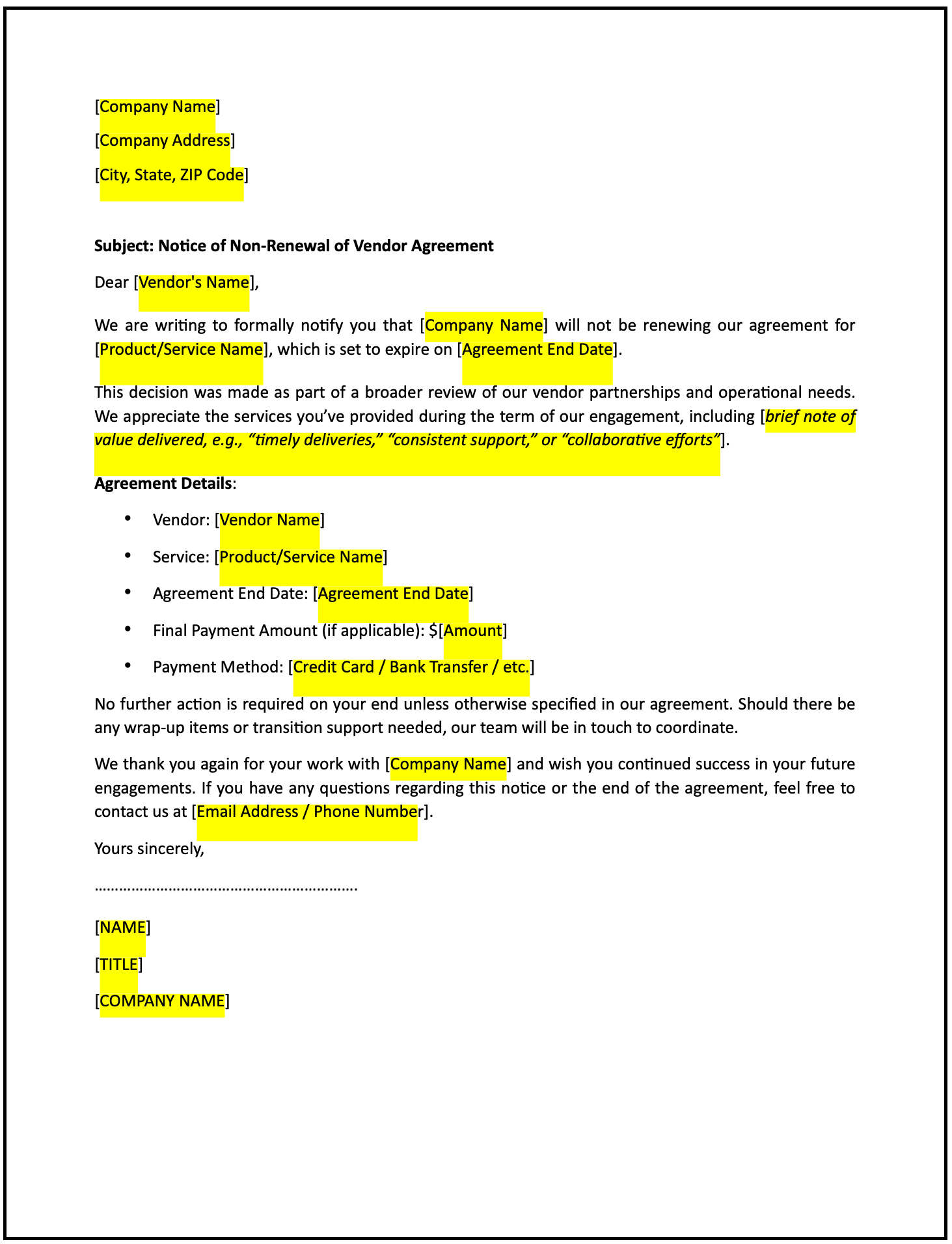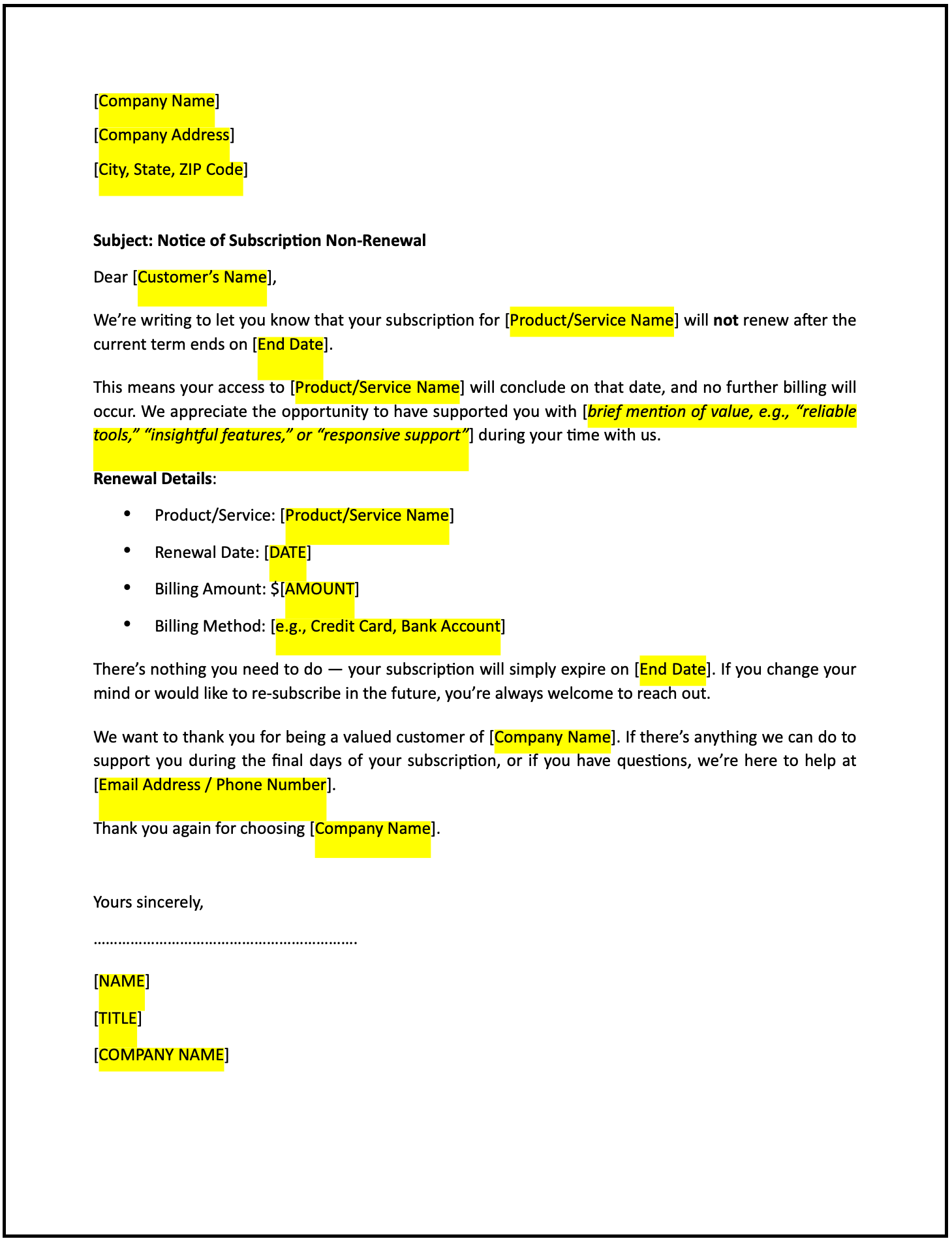Letter of early closure of services or facilities: Free template

Letter of early closure of services or facilities
A notification letter of early closure of services or facilities is a formal way to inform stakeholders, customers, or employees about a change in operational hours. This letter explains the reason for the early closure, outlines its impact, and provides any necessary instructions to minimize inconvenience.
How to use this notification letter of early closure of services or facilities
- Open with the purpose: Begin by informing recipients about the decision to close services or facilities earlier than usual.
- Specify the closure details: Clearly mention the date, affected services or facilities, and the revised operating hours.
- Provide the reason: Briefly explain the rationale behind the early closure, such as maintenance, holidays, or unforeseen circumstances.
- Highlight the impact: Describe how the closure might affect stakeholders and provide suggestions for managing disruptions.
- Offer alternatives: Mention other options available, such as alternative locations, extended hours on other days, or online services.
- Apologize for any inconvenience: Express regret for the change and emphasize the organization’s commitment to minimizing disruptions.
- Maintain a professional tone: Ensure the letter is clear, respectful, and supportive.
- Provide contact information: Include details for recipients to reach out with questions or further assistance.
Benefits of using a notification letter of early closure of services or facilities
This letter template ensures a structured and professional way to communicate changes in operating hours while fostering transparency and goodwill. Here’s how it helps:
- Promotes clarity: Clearly outlining the early closure ensures stakeholders are informed and prepared.
- Reflects professionalism: A well-crafted letter demonstrates respect for customers and stakeholders.
- Encourages goodwill: Providing explanations and alternatives fosters understanding and minimizes inconvenience.
- Reduces confusion: Clear communication ensures all parties are aligned about the changes.
- Provides documentation: A formal record of the notification is valuable for internal and external reference.
Tips for writing an effective notification letter of early closure of services or facilities
- Be specific: Clearly describe the affected services or facilities, the revised hours, and the closure date.
- Use professional language: Maintain a respectful and empathetic tone to reassure recipients.
- Highlight reasoning: Briefly explain the rationale for the early closure to build trust and transparency.
- Include actionable advice: Provide suggestions for managing the disruption, such as alternative options or rescheduling.
- Keep it concise: Focus on the key points while ensuring the tone is professional and understanding.
Frequently asked questions (FAQs)
Q: What details should I include in this letter?
A: Include the date, revised hours, affected services or facilities, reason for the change, and any alternatives.
Q: Should I personalize the letter?
A: While a general letter is appropriate for large audiences, personalizing for specific stakeholders can add a thoughtful touch.
Q: Who typically sends this letter?
A: The management, customer service, or communications team usually sends this letter.
Q: How formal should this letter be?
A: The tone should be professional yet empathetic, focusing on clarity and reassurance.
Q: When should this letter be sent?
A: Send the letter as soon as the decision is made to ensure timely communication.
Q: Can this letter include a follow-up plan?
A: Yes, mentioning follow-up communication for updates or future operational changes can enhance clarity.
Q: Is acknowledgment from the recipient required?
A: While not mandatory, encouraging acknowledgment ensures recipients are aware of and prepared for the changes.
This article contains general legal information and does not contain legal advice. Cobrief is not a law firm or a substitute for an attorney or law firm. The law is complex and changes often. For legal advice, please ask a lawyer.


